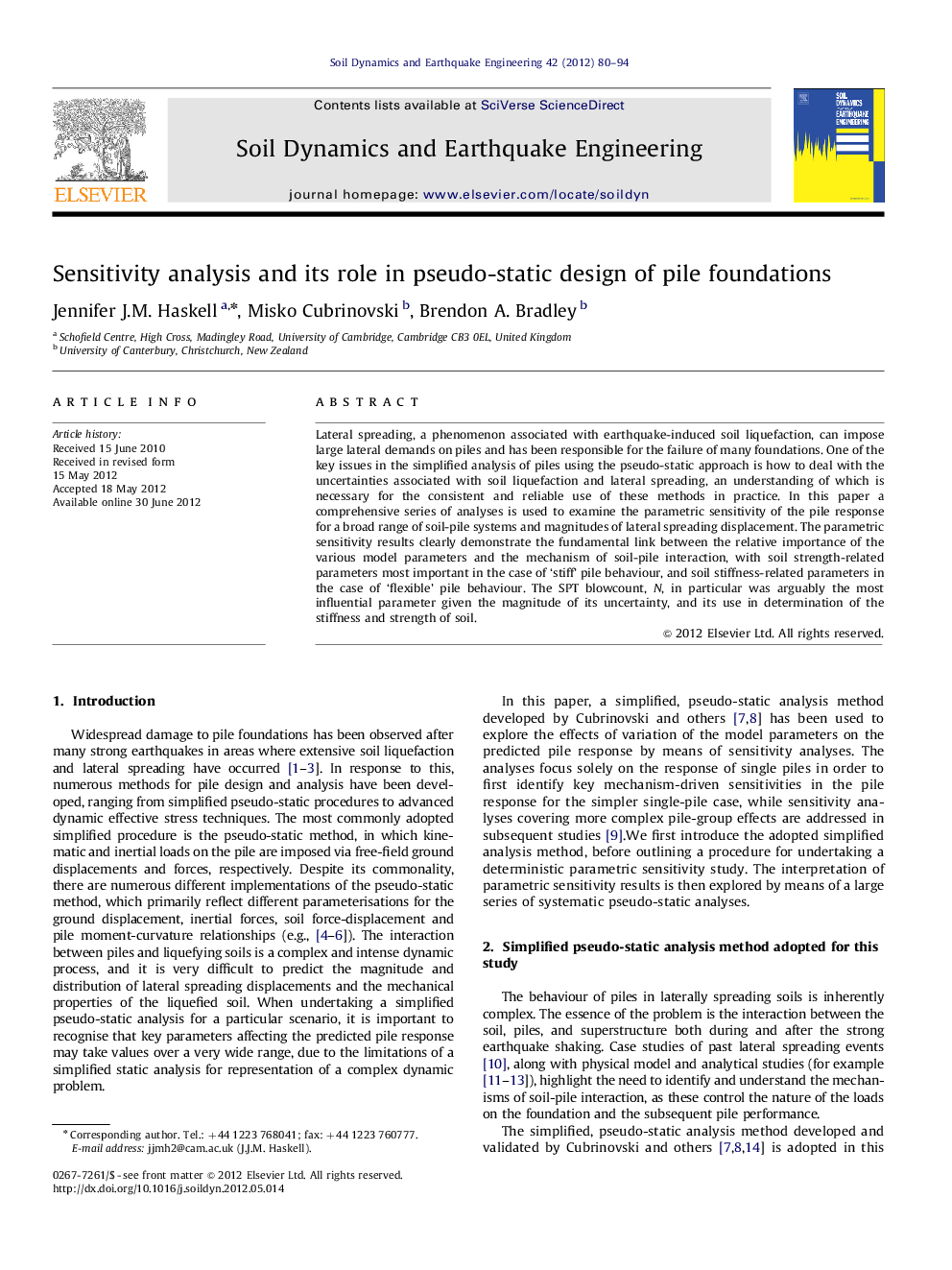| کد مقاله | کد نشریه | سال انتشار | مقاله انگلیسی | نسخه تمام متن |
|---|---|---|---|---|
| 304479 | 512808 | 2012 | 15 صفحه PDF | دانلود رایگان |

Lateral spreading, a phenomenon associated with earthquake-induced soil liquefaction, can impose large lateral demands on piles and has been responsible for the failure of many foundations. One of the key issues in the simplified analysis of piles using the pseudo-static approach is how to deal with the uncertainties associated with soil liquefaction and lateral spreading, an understanding of which is necessary for the consistent and reliable use of these methods in practice. In this paper a comprehensive series of analyses is used to examine the parametric sensitivity of the pile response for a broad range of soil-pile systems and magnitudes of lateral spreading displacement. The parametric sensitivity results clearly demonstrate the fundamental link between the relative importance of the various model parameters and the mechanism of soil-pile interaction, with soil strength-related parameters most important in the case of ‘stiff’ pile behaviour, and soil stiffness-related parameters in the case of ‘flexible’ pile behaviour. The SPT blowcount, N, in particular was arguably the most influential parameter given the magnitude of its uncertainty, and its use in determination of the stiffness and strength of soil.
► Pseudo-static analysis is applied to piles in laterally spreading soil.
► Parametric sensitivity for a wide range of soil-pile systems is studied.
► The parametric sensitivity trends reflect the mechanism of soil-pile interaction.
► A process for conducting and interpreting sensitivity analyses is developed.
Journal: Soil Dynamics and Earthquake Engineering - Volume 42, November 2012, Pages 80–94